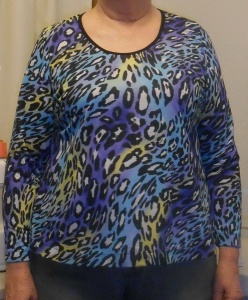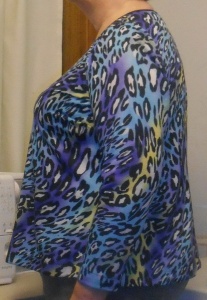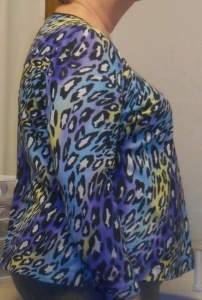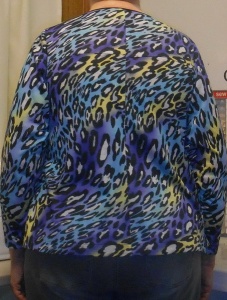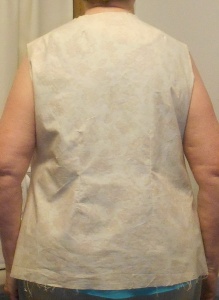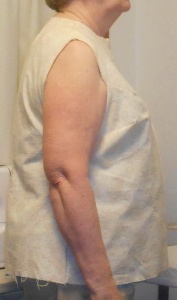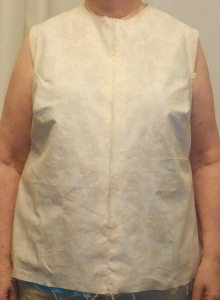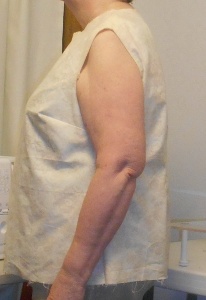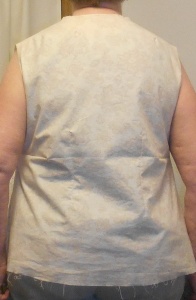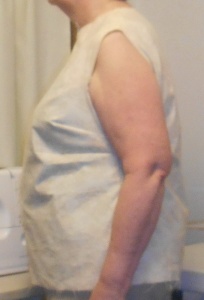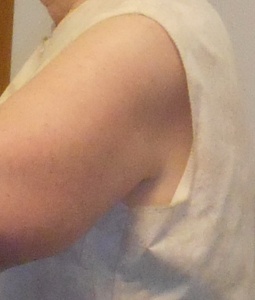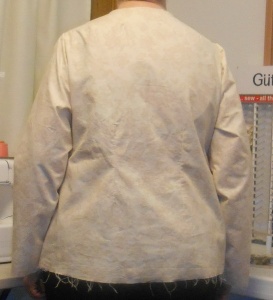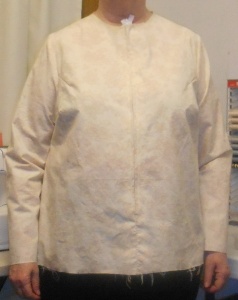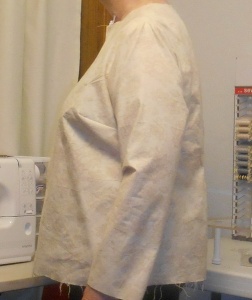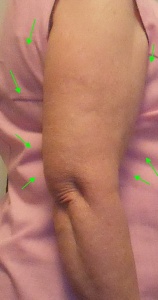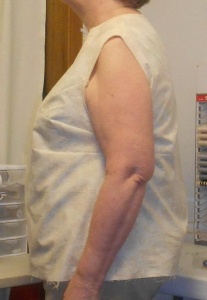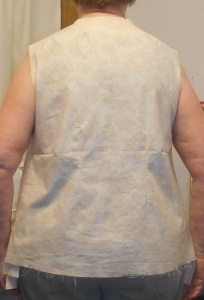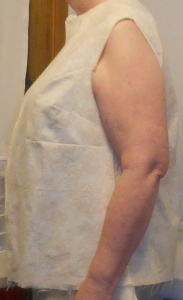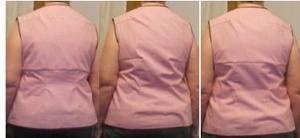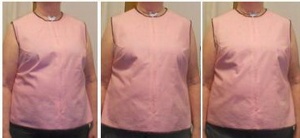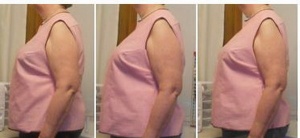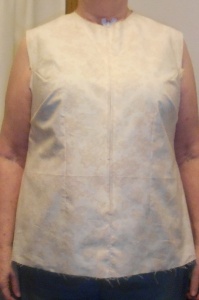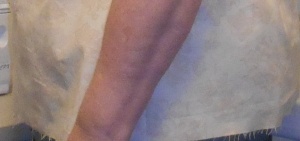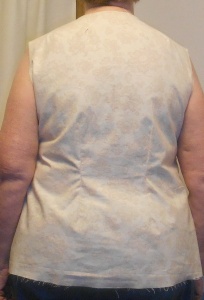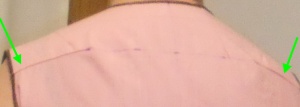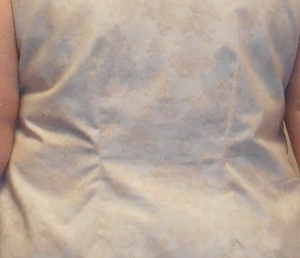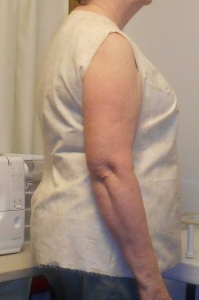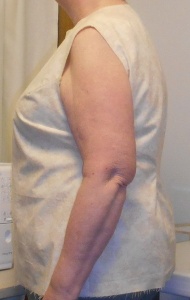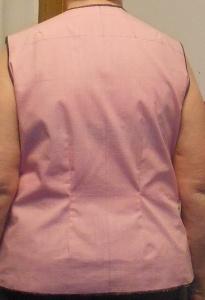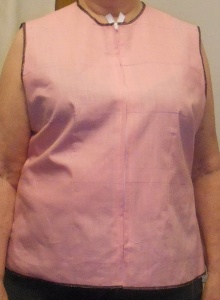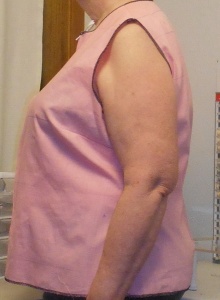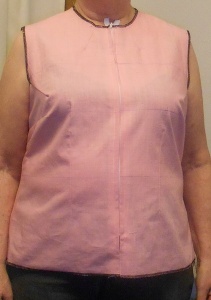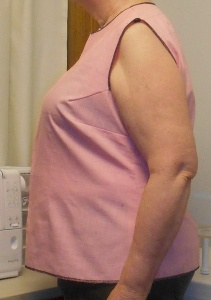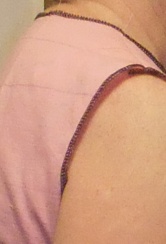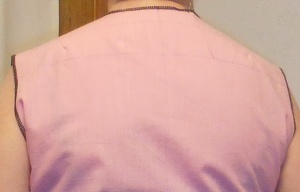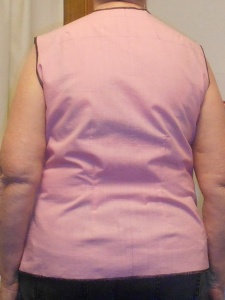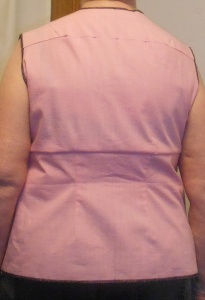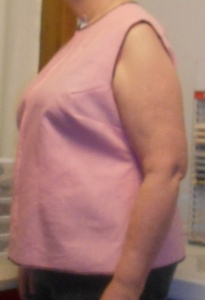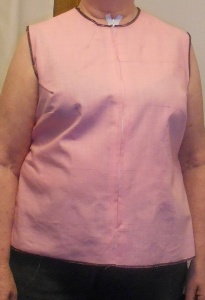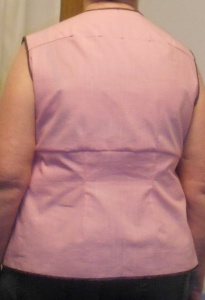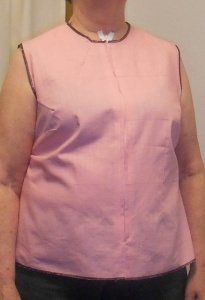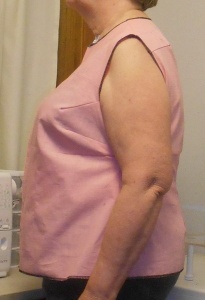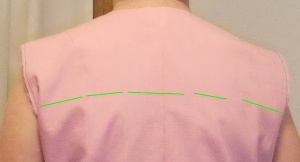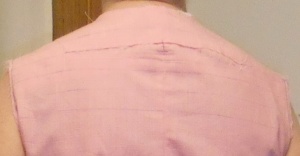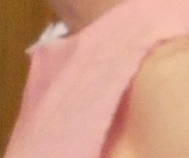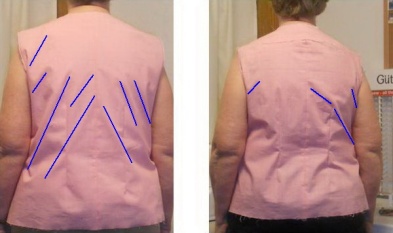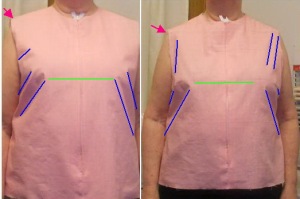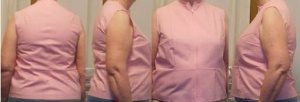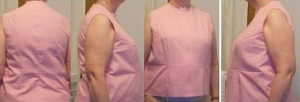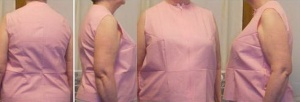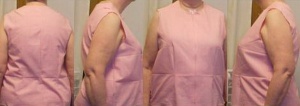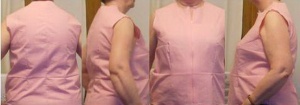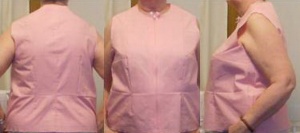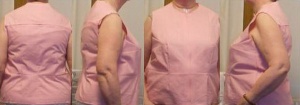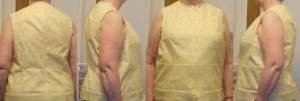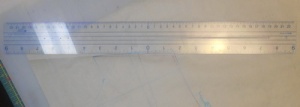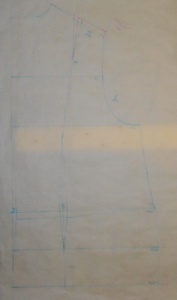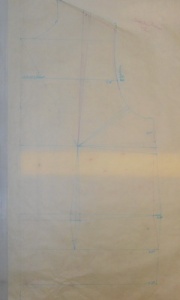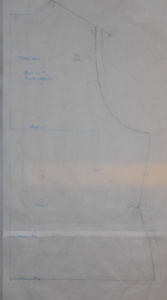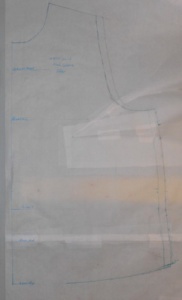I copied the final fitting changes back to my original tracing of size 16, CS1201. After copying the changes, I folded the bust darts and adjusted the side seam. Spent an hour adjusting the bust dart depth and lines. Then I trued the seams and had to completely revise the bust dart. What a pain. But this block is now a wealth of information. It is showing a dart every place where I needed to make depth changes. It’s possible I could move some of the darts to seams or merge with other darts. If I had the figure of 12-year-old boy (1) I could move the darts anywhere and (2) I probably wouldn’t need most of those darts. But I have a roly poly figure otherwise known as the mature-female body and there’s no question in my mind that some darts will not be able to move or not move in their entirety while retaining the fit I desire and have worked so hard to achieve.
Finally satisfied I labeled the original tracing ‘WOVEN 20170128″ on all pieces and proceeded to develop a Knit block/sloper. First up, make a clean copy with all final notations. I have several references for converting a woven block to knit block. I’m not a fan of the ‘cut one size smaller’ theory. Neither did I care for “Thousand Teeny Changes” two of my sources recommended. I sorted through them and realized that (1) there is no standard; no reliable set of steps that will guarantee a fitted knit sloper. Whatever I do, the next step will be “make a test garment and adjust as desired”. Once that realization struck me, I did some fast calculations and opted to take a 1/4″ tuck at cross back and cross front; and another 1/4″ tuck from shoulder through hem. I took a 1/4″ tuck across the cap of the sleeve and then had to redraw the cap slightly. This will be my basis. I plan to update it with needed fitting changes. But like the original tracing of CS1201, I don’t want to lose or mess-up this clean copy and so made a 2nd working copy. On the working copy starting with the BACK
(Back) move neckline darts to the center back. I will plan on always using a center back seam when using this back. Move half the shoulder dart width to the armscye; the other half to the neckline. Move 1/2″ the back waist dart to the center dart. Redraw the center back seam to include the new curvature. I’d like to move the other 1/2″ of the waist dart to the side seam, but I’m worried the back side seam won’t match and work well with the front side seam because….
Front mark the armscye dart as unsewn. Retain 1-3/4″ (7/8 deep dart); rotate the rest of the bust dart to the hem. I’m hoping that will add a little tummy room. I realize I’m creating a bit of a ‘swing’ hem. For now, I’m just accepting that. Later I will consider how and how much of the swing to remove. My front doesn’t need a waist dart. So nothing to move to the side seam. Which is why I hesitated to move any portion of the back waist dart to the side seam. This will be reconsidered in future garments.
I chose a rayon knit with 30% stretch. I actually purchased a few knits recently. I realized I didn’t have knit fabrics that would make good test garments. They were either too dark or didn’t have the right stretch or I didn’t have enough yardage for a front, back, plus long sleeve. Hope for wearable test garments (I’m tired of throwing fabric into the trash), I looked specifically for busy prints that would hide fitting issues. I gave my fabric a whiff of starch as I was pressing; laid it out and cut only the front and back.
I used all-purpose thread in the bobbin and needle for stay stitching and the bust dart. Switched to water-soluble thread for the seams. I was really pleased with the first fitting. I think I have only 1 issue that I will correct (there’s another I’m ignoring) but I’ll write about that tomorrow. It’s an issue that I need to think through. Considering, my actions and the results as well as possible options and then writing it all out will help me do the needed thinking…. and planning. So with minimal fitting, I was done. The 1/4″ tucks were perfect. The sleeve cap was good. Rotating a portion of the bust dart worked as expected.
I finished the neckline with FOE; hemmed by top stitching. Another goof, I like my sleeves marked with minimum ease. I made it too little. I opted to create a vent in the cuff but my T-shirt may be a candidate for half or 3/4 sleeves later on.
Not surprising, my left side is smoother and looks better than the right. I did work on the uneven shoulder issue, but it needs more consideration. As you can see, the drag lines from the bust are nothing like they were on the finished woven sloper. I’m not entirely sure if I removed too much ease from the front or if I need to take up more in the bust darts and then of course rotate to the hem. I did hate those big honkin’ nearly 3″ bust darts the woven sloper ended up having. Over all, to me, this looks good. Better than any RTW, I can buy.
In only one fitting, I’m in the tweaking stage. I’ll talk more about the back tomorrow but today just let me say, I’m not terribly unhappy with the back but I do see that a drag line formed starting at the shoulder. This is a typical line that says “Add an RBA ” or make it bigger.
Again, things I’ll think about when I write tomorrows post. For now, I’m just terribly, terribly pleased with myself and my new sloper.
